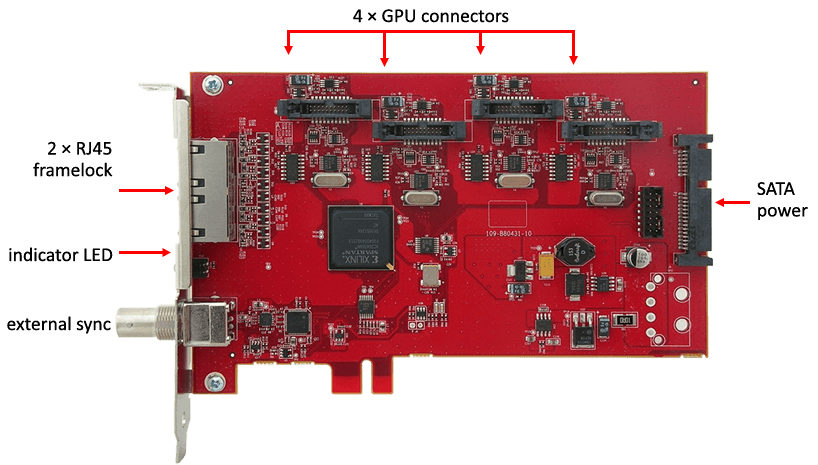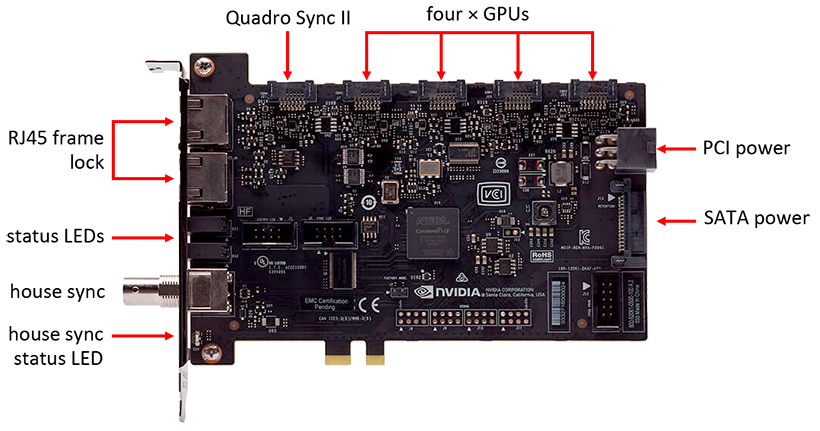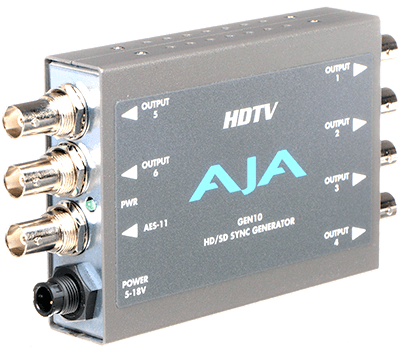GPU Graphics Cards
Within a media server, multiple GPUs and displays must be synchronized. This is called output locking, and ensures that all displays refresh and scan together, using a sync module (card) designed for the GPUs in use.
Delta media servers use a directly-injected external house sync generator signal into each graphics sync module via its BNC connector. This is called genlocking. (Genlocking is a licence option in Delta.) This ‘house sync’ is then selected as the timing source in each GPU’s configuration.
Synchronization Modules
AMD® ATI FirePro™ S400 GPU synchronization module, partners up to four AMD FirePro graphics cards:
The NVIDIA® Quadro® Sync II is very similar, partnering up to four of their Quadro Pascal series cards:
HD-SDI Graphics Cards
HD-SDI graphics cards, such as from Bluefish444 and Matrox® have built-in synchronization (house-sync input) and do not require secondary sync cards, though multiple HDSDI cards in a single server require individual sync cables, as there is no internal distribution.
Live Capture
When live capture devices are being used, capture cards should be genlocked to the same source as the server for best performance. Delivery of a captured frame to display is not instantaneous (within a few frames, depending on how it is being processed, such as effects being applied).
Sync Generators: for Display, and More
‘House sync’ modules (also known as black-burst or sync generators), such as these examples, with the required number of outputs, generate a configurable square-wave sync pulse for genlocking the sync cards and other timing-dependent devices, such as show controllers, live capture cards, and separate audio systems:
The smaller unit, above, can be used to provide a reference pulse simply for display synchronisation. We commonly recommend a tri-level sync pulse of an appropriate format for the required display resolution and refresh rate.
The larger unit also provides an audio-synchronising ‘word clock’. This is a digital signal at 44.1 or 48 kHz designed for keeping digital audio devices in sync with a constant, precisely-timed bit-rate. Since LTC is broadcast via an audio source, a word clock will keep all devices including the LTC source in sync. A sync generator such as this will therefore meet the needs of both GPU display sync, and server playback sync via LTC.
Page edited [d/m/y]: 01/03/2019



